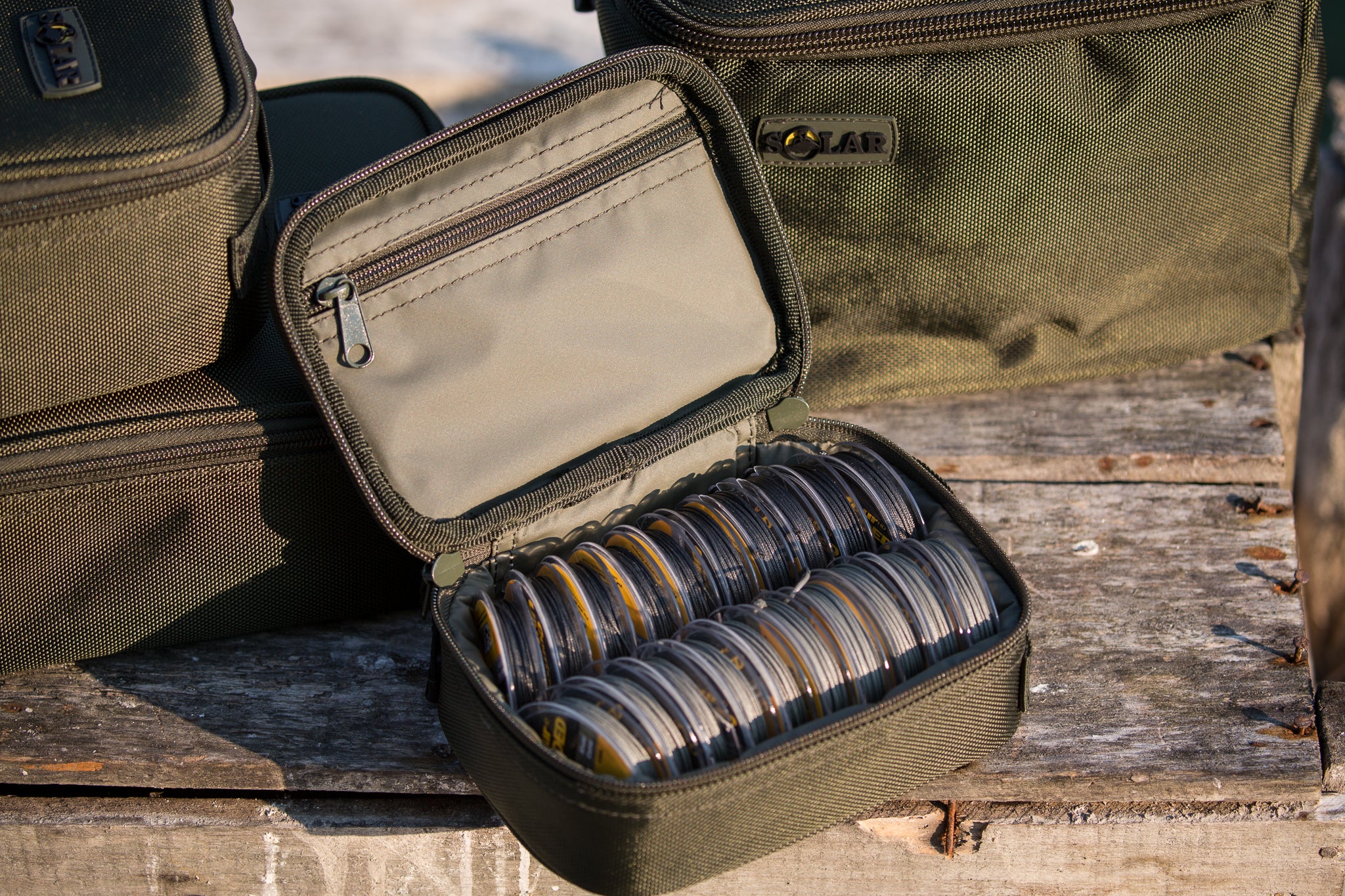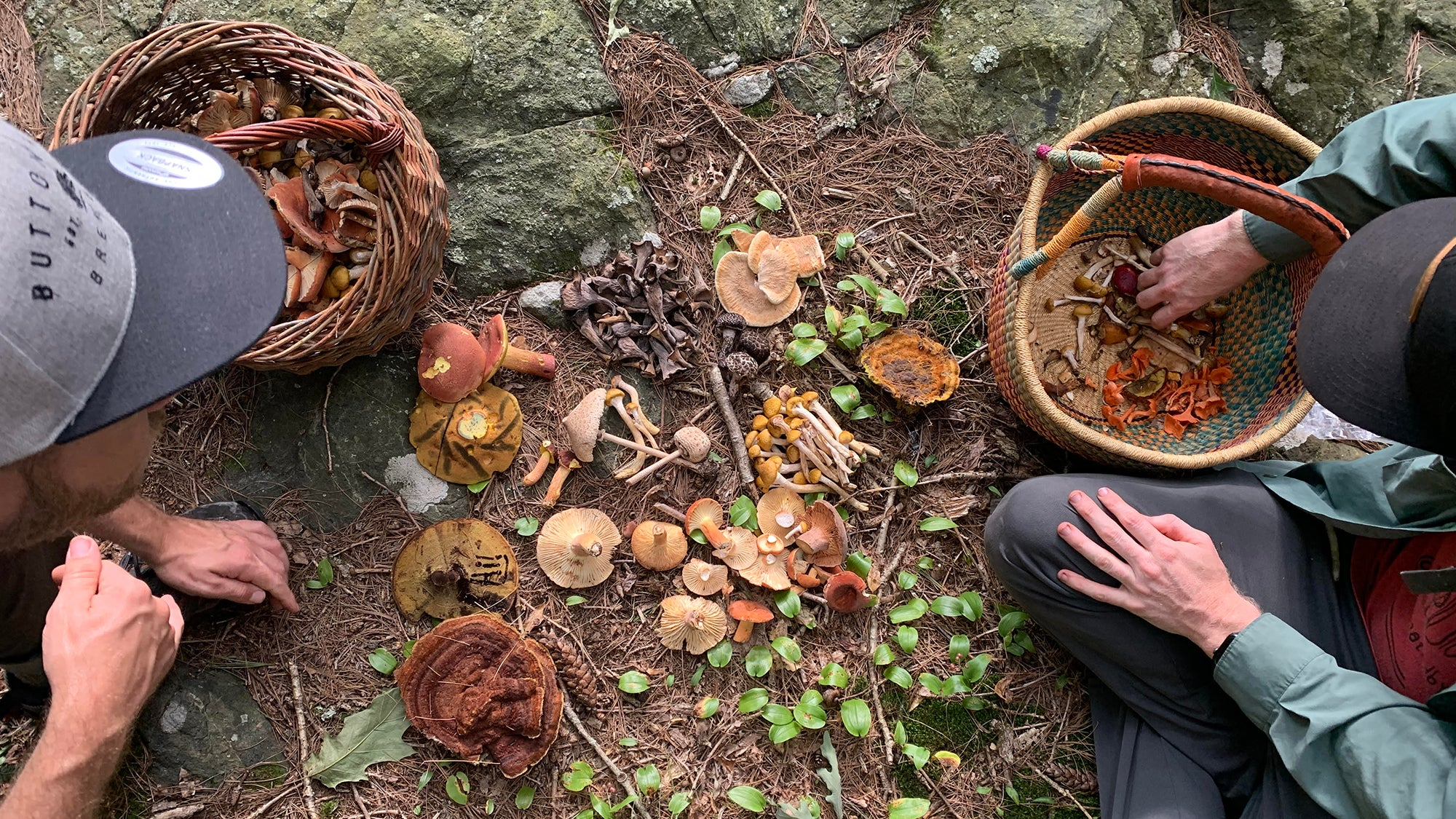mushroom bag ·
mushroom basket ·
Mushroom cultivation ·
mushroom hunting ·
mushroom hunting for beginners ·
mushroom hunting supplies ·
Mushroom identification ·
mushrooms ·
How to start a mushroom business using bags?
Mushrooms have become a popular food item and have gained significant importance in the market due to their unique taste and various health benefits. They are a great source of protein, fiber, and vitamins, and are low in calories, making them a perfect food item for health-conscious people. In this article, we will discuss the advantages of growing mushrooms in bags and why it is a profitable business.
How to start a mushroom business using bags?

Advantages of growing mushrooms in bags
Growing mushrooms in bags has many advantages over traditional methods of cultivation, which include:
-
Controlled environment
Growing mushrooms in bags provides a controlled environment for the mushrooms to grow. This controlled environment ensures that the mushrooms get the right amount of moisture, temperature, and humidity, which are essential for their growth. This method of cultivation allows farmers to grow mushrooms throughout the year, regardless of the season or weather.
-
High yield
Growing mushrooms in bags provides a high yield of mushrooms. The bags are filled with a substrate that is rich in nutrients, which ensures that the mushrooms grow healthy and strong. This method of cultivation allows farmers to produce a large quantity of mushrooms in a small space, which increases their profit margins.
-
Easy to handle
Growing mushrooms in bags is easy to handle, even for beginners. The bags come with pre-sterilized substrate, which eliminates the need for the farmers to sterilize the substrate themselves. The bags can be stacked on top of each other, which saves space and allows farmers to grow mushrooms in a limited space.
-
Cost-effective
Growing mushrooms in bags is a cost-effective method of cultivation. The bags are inexpensive and can be reused multiple times. The substrate used in the bags is also inexpensive, which makes this method of cultivation affordable for farmers. This method of cultivation also requires less labor, which reduces the cost of production.
-
Less wastage
Growing mushrooms in bags produces less wastage compared to traditional methods of cultivation. The bags are designed to prevent contamination, which reduces the risk of losing the entire crop due to contamination. This method of cultivation also produces less waste material, which makes it more environmentally friendly.
In conclusion, growing mushrooms in bags has many advantages over traditional methods of cultivation. It provides a controlled environment for the mushrooms to grow, ensures a high yield of mushrooms, is easy to handle, cost-effective, and produces less wastage. With the increasing demand for mushrooms in the market, growing mushrooms in bags is a profitable business that can provide farmers with a steady income.
Getting started
Mushrooms have gained popularity in recent years due to their unique flavor and numerous health benefits. This has led to an increase in demand for mushrooms in the market, making it a profitable business venture. However, starting a mushroom business can be challenging if you do not have the right knowledge and skills. In this article, we will discuss the steps involved in getting started in the mushroom business.
Understanding the different types of mushrooms
Before starting a mushroom business, it is essential to understand the different types of mushrooms available in the market. There are numerous varieties of mushrooms, including button, oyster, shiitake, and portobello mushrooms. Each type of mushroom has a unique flavor, texture, and nutritional value, which can impact your business. Therefore, it is crucial to research the different types of mushrooms and choose the ones that align with your business goals.
Choosing the best mushroom for your business
After researching the different types of mushrooms, the next step is to choose the best mushroom for your business. This involves analyzing your market and identifying the mushroom varieties that are in high demand. It is also essential to consider the cost of production, as some mushrooms may require specific growing conditions, which can be expensive. Ultimately, the best mushroom for your business is one that is in high demand and can be produced at a low cost.
Analyzing your market
Analyzing your market is a critical step in starting a mushroom business. This involves researching your target audience and identifying their preferences and needs. It is also essential to research your competitors and understand their strengths and weaknesses. This information can help you develop a unique selling proposition and differentiate yourself from your competitors. You can use online surveys, focus groups, and market research reports to gather information about your market.
Developing a business plan
Once you have identified the best mushroom for your business and analyzed your market, the next step is to develop a business plan. A business plan is a roadmap that outlines your business goals, strategies, and financial projections. It is essential to include information about your target audience, marketing strategies, and operational costs in your business plan. You can use online templates or seek the assistance of a business consultant to develop a comprehensive business plan.
Starting a mushroom business can be a profitable venture if done correctly. Understanding the different types of mushrooms, choosing the best mushroom for your business, analyzing your market, and developing a business plan are critical steps in getting started in the mushroom business. With the right knowledge, skills, and resources, you can grow a successful mushroom business that meets the needs of your target audience.
Preparing the substrate
The substrate is an essential component in growing mushrooms. It provides the necessary nutrients and environment for the mushrooms to grow. Therefore, it is crucial to prepare the substrate correctly to ensure a successful harvest. In this article, we will discuss the materials required, choosing the right substrate, sterilizing the substrate, and inoculating the substrate with mushroom spores.
Materials required
To prepare the substrate for growing mushrooms, you will need the following materials:
- Substrate material (sawdust, straw, or compost)
- Water
- Containers (plastic bags or trays)
- Spawn (mushroom spores or mycelium)
- Sterilization equipment (pressure cooker or steam generator)
Choosing the right substrate
Choosing the right substrate is critical in growing mushrooms. The substrate material should provide the necessary nutrients and support for the mushrooms to grow. Common substrate materials include sawdust, straw, and compost. Sawdust is an excellent substrate for certain types of mushrooms, such as shiitake and lion's mane. Straw is commonly used for growing oyster mushrooms, while compost is used for button mushrooms. It is essential to choose the right substrate material for the type of mushroom you want to grow.
Sterilizing the substrate
Sterilizing the substrate is an essential step in preparing the substrate for growing mushrooms. This helps to kill any unwanted bacteria or fungi that may compete with the mushrooms for nutrients. Sterilization can be done using a pressure cooker or a steam generator. The substrate material is placed in a container and sterilized at a high temperature for a specific period, depending on the substrate material. It is essential to follow the sterilization instructions carefully to avoid contamination.
Inoculating the substrate with mushroom spores
After sterilizing the substrate, the next step is to inoculate it with mushroom spores. Mushroom spores are tiny reproductive cells that grow into mycelium, the vegetative part of the mushroom. Mycelium grows through the substrate, absorbing nutrients and developing into mushroom fruit bodies. Inoculation can be done by adding mushroom spores or mycelium to the substrate and mixing thoroughly. The inoculated substrate is then placed in a suitable environment for the mushrooms to grow.
Preparing the substrate is a critical step in growing mushrooms. It involves choosing the right substrate material, sterilizing it, and inoculating it with mushroom spores. With the right materials and techniques, you can prepare a substrate that provides the necessary nutrients and environment for the mushrooms to grow. A successful harvest requires careful attention to detail and proper maintenance of the growing environment.

Cultivating mushrooms in bags
Growing mushrooms in bags is an effective and convenient way to cultivate mushrooms. It allows for easy management of the growing environment and provides a clean and sterile environment for the mushrooms to grow. In this article, we will discuss selecting the right bag for cultivation, filling the bags with substrate, sealing and incubating the bags, and caring for the bags during incubation.
Selecting the right bag for cultivation
When selecting a bag for mushroom cultivation, it is important to choose one that is made of a material that can withstand high temperatures and pressure. Polypropylene bags are a popular choice for growing mushrooms because they are heat-resistant, durable, and can be sterilized easily. The bags should also be large enough to hold the substrate and provide enough space for the mushrooms to grow.
Filling the bags with substrate
Once you have selected the bags, the next step is to fill them with the substrate. The substrate material should be prepared beforehand and sterilized to prevent contamination. The substrate can be filled in the bags using a funnel or by hand. It is essential to fill the bags evenly to prevent uneven growth of the mushrooms. The bags should be filled to about three-quarters full, leaving enough space for the mushrooms to grow.
Sealing and incubating the bags
After filling the bags with substrate, they should be sealed to prevent contamination and incubated at the appropriate temperature and humidity. The bags can be sealed using a heat sealer or by tying them tightly with a twist tie. It is important to ensure that the bags are sealed properly to prevent the growth of unwanted bacteria or fungi. The bags should then be placed in a warm and humid environment for incubation.
Caring for the bags during incubation
During incubation, it is important to monitor the bags and maintain the appropriate temperature and humidity levels. The bags should be kept in a dark place to promote mushroom growth. The bags should also be turned and rotated periodically to ensure even growth of the mushrooms. Any bags showing signs of contamination should be removed immediately to prevent the spread of unwanted bacteria or fungi.
Cultivating mushrooms in bags is a convenient and effective way to grow mushrooms. Selecting the right bag, filling it with substrate, sealing and incubating the bags, and caring for them during incubation are all important steps in the process. With proper care and attention to detail, you can produce a bountiful harvest of fresh and delicious mushrooms.
Harvesting and packaging
If you are looking to start a mushroom business or just want to learn more about harvesting and packaging mushrooms, you have come to the right place. In this guide, we will take you through the steps involved in harvesting and preparing mushrooms for sale, as well as packaging them for distribution.
Harvesting the mushrooms
Harvesting mushrooms is a delicate process that requires attention to detail and care. It is important to harvest mushrooms at the right time, as this will determine their quality and freshness. Mushrooms are typically ready for harvest when their caps have fully opened but have not yet started to curl up. At this stage, the mushrooms are at their most flavorful and nutritious.
When harvesting mushrooms, it is important to use a sharp knife or pair of scissors to cut the stem close to the base of the mushroom. This will help to prevent damage to the surrounding area and ensure that the mushroom remains intact. It is also important to handle the mushrooms carefully to prevent bruising or damage to the caps.
Preparing the mushrooms for sale
Once the mushrooms have been harvested, it is important to prepare them for sale. This involves cleaning, trimming, and sorting the mushrooms to ensure that they are of the highest quality. The first step in this process is to remove any debris or dirt from the mushrooms by gently wiping them with a damp cloth.
Next, the mushrooms should be trimmed to remove any damaged or discolored areas. This can be done using a small knife or pair of scissors. It is important to take care not to remove too much of the mushroom, as this can reduce its overall value.
Finally, the mushrooms should be sorted by size and quality. This will ensure that they are sold at the right price and that customers receive the best possible product. Sorting can be done by hand or using a machine, depending on the size of the operation.
Packaging the mushrooms for distribution
Packaging mushrooms for distribution is a critical step in ensuring that they reach customers in the best possible condition. There are several factors to consider when packaging mushrooms, including the type of packaging used, the size of the mushrooms, and the temperature at which they are stored.
The most common types of packaging used for mushrooms are punnets and trays. Punnets are small plastic containers that are typically used for smaller mushrooms, while trays are used for larger mushrooms. Both types of packaging are designed to protect the mushrooms from damage during transport and storage.
When packaging mushrooms, it is important to ensure that they are stored at the right temperature. Mushrooms should be stored at a temperature between 0-5°C to ensure that they remain fresh and do not spoil. It is also important to monitor the temperature during transport to ensure that the mushrooms do not become too warm or too cold.
In conclusion, harvesting and packaging mushrooms is a complex process that requires attention to detail and care. By following the steps outlined in this guide, you can ensure that your mushrooms are of the highest quality and reach customers in the best possible condition.
Marketing and sales
Running a successful mushroom business requires more than just growing and harvesting high-quality mushrooms. It also involves effective marketing and sales strategies to ensure that your products reach the right customers at the right price. In this guide, we will take you through the key steps involved in marketing and selling your mushrooms.
Identifying potential buyers
The first step in marketing your mushrooms is to identify potential buyers. This can be done by conducting market research to determine who your target audience is and what their needs are. Some potential buyers for mushrooms include restaurants, grocery stores, farmers markets, and individuals.
Once you have identified your target audience, you can begin to develop marketing strategies that will appeal to them. This may involve creating marketing materials such as brochures, flyers, or social media posts that highlight the health benefits of mushrooms, or showcasing your mushrooms at local events and farmers markets.
Pricing the mushrooms
Setting the right price for your mushrooms is critical to the success of your business. This involves taking into account factors such as production costs, competition, and consumer demand. Pricing too high can deter potential buyers, while pricing too low can result in lower profit margins.
To determine the right price for your mushrooms, it is important to conduct market research to understand what your competitors are charging for similar products, and to consider the value that your mushrooms offer compared to those of your competitors.
Branding and packaging
Branding and packaging are important aspects of marketing your mushrooms. Your brand should communicate the quality and uniqueness of your mushrooms, and should resonate with your target audience. This may involve developing a logo, creating a website or social media presence, or establishing a brand identity through consistent use of colors, fonts, and messaging.
Packaging is also an important aspect of marketing your mushrooms, as it can influence consumer perceptions of your product. Packaging should be designed to protect your mushrooms and keep them fresh, while also reflecting your brand identity and appealing to your target audience.
Selling through different channels
Selling your mushrooms through different channels can help to expand your customer base and increase sales. Some potential channels to consider include:
- Direct sales to consumers through farmers markets or online marketplaces.
- Selling to grocery stores, restaurants, and other foodservice businesses.
- Selling to food distributors who supply products to retailers and other businesses.
It is important to consider the pros and cons of each channel and to develop strategies to effectively market your mushrooms through each one.
In conclusion, marketing and sales are critical aspects of running a successful mushroom business. By identifying potential buyers, pricing your mushrooms correctly, developing a strong brand and packaging, and selling through different channels, you can ensure that your mushrooms reach the right customers and achieve maximum profitability.

Scaling up
As your mushroom business grows, you may find that you need to expand your production, explore new markets, and hire additional staff. This guide will take you through the key steps involved in scaling up your mushroom business.
Assessing the business growth
Before you can begin to scale up your mushroom business, it is important to assess your current business growth. This involves analyzing your sales, production, and finances to determine where your business is performing well and where improvements can be made.
Some key performance indicators to consider when assessing your business growth include:
- Sales growth over time
- Profit margins and profitability
- Production capacity and efficiency
- Customer retention rates
- Employee turnover rates
By understanding where your business is currently at, you can begin to develop strategies for growth.
Identifying new markets
One way to scale up your mushroom business is to identify new markets to sell your products in. This may involve researching and targeting new customer segments, such as specialty food stores, natural food markets, or gourmet restaurants.
Another option is to expand your geographical reach by exploring new regions or countries where there is high demand for mushrooms. This may involve partnering with distributors or other businesses to expand your reach.
Expanding production
To meet the demands of a growing business, it may be necessary to expand your production capacity. This may involve investing in new equipment, increasing the size of your growing facility, or exploring new production methods.
When expanding production, it is important to ensure that you maintain the quality of your mushrooms and continue to adhere to food safety regulations.
Hiring staff and managing finances
As your business grows, you may need to hire additional staff to manage operations and support business growth. This may include hiring employees for production, sales, marketing, or administration.
Managing finances is also critical when scaling up your mushroom business. This involves keeping accurate records of expenses and revenues, forecasting future revenue and expenses, and securing funding or investment to support business growth.
It is important to create a budget and financial plan that takes into account the costs associated with scaling up your business, such as new equipment, additional staff, and marketing expenses.
In conclusion, scaling up your mushroom business requires careful planning and execution. By assessing your business growth, identifying new markets, expanding production, hiring staff, and managing finances, you can successfully grow your business and achieve your goals.
Conclusion
In this guide, we have explored the key steps involved in growing your mushroom business. From cultivating high-quality mushrooms to expanding your reach and scaling up production, these steps can help you achieve your business goals.
Summary of the steps involved
To summarize, the steps involved in growing your mushroom business include:
- Cultivating high-quality mushrooms
- Marketing and selling your products
- Scaling up your business through expanding production, identifying new markets, and hiring staff
- Managing finances and budgets to support growth
By following these steps, you can build a successful and sustainable mushroom business.
Importance of Patience and Persistence
Growing a successful mushroom business takes patience and persistence. It may take time to cultivate high-quality mushrooms and build a loyal customer base. It is important to stay committed to your business goals and maintain a positive outlook, even in the face of challenges.
Future of mushroom business with bags
One exciting trend in the mushroom industry is the use of bags to grow mushrooms. Mushroom bags provide a sterile and controlled environment for mushrooms to grow, allowing for increased production and consistency in quality.
In addition, the use of bags can help reduce waste and increase efficiency in production. This trend is expected to continue as more mushroom growers recognize the benefits of using bags in their operations.
In conclusion, growing a successful mushroom business requires careful planning, hard work, and dedication. By following the steps outlined in this guide and staying committed to your goals, you can build a thriving mushroom business that meets the needs of customers and supports your long-term success.
FAQs
If you're considering starting a mushroom business using bags, you may have some questions. Here are answers to some common questions:
Q: How much space do I need to start a mushroom business with bags? A: The amount of space you need depends on the scale of your operation. For a small operation, you may only need a few hundred square feet of space. For a larger operation, you may need several thousand square feet. However, the use of bags can help maximize space and increase production efficiency.
Q: Can I grow mushrooms in bags indoors? A: Yes, mushrooms can be grown in bags indoors. In fact, indoor growing can provide a more controlled environment for growing mushrooms, which can lead to higher quality and more consistent production.
Q: What are the costs involved in starting a mushroom business with bags? A: The costs of starting a mushroom business with bags can vary depending on the scale of your operation and the equipment and supplies you need. Some of the costs involved may include bags, substrate, spawn, equipment for cultivation, and marketing materials.
Q: How long does it take to grow mushrooms in bags? A: The time it takes to grow mushrooms in bags can vary depending on the species of mushroom and the growing conditions. In general, it can take anywhere from a few weeks to a few months to grow mushrooms in bags.
Q: How can I ensure the quality and safety of my mushrooms? A: To ensure the quality and safety of your mushrooms, it is important to follow proper cultivation and handling practices. This includes maintaining a sterile growing environment, using high-quality materials, and storing and handling mushrooms properly. It is also important to follow food safety regulations and obtain any necessary certifications or licenses.
In conclusion, starting a mushroom business with bags can be a rewarding and profitable venture. By considering factors such as space requirements, costs, and cultivation practices, you can set yourself up for success in this exciting industry.























